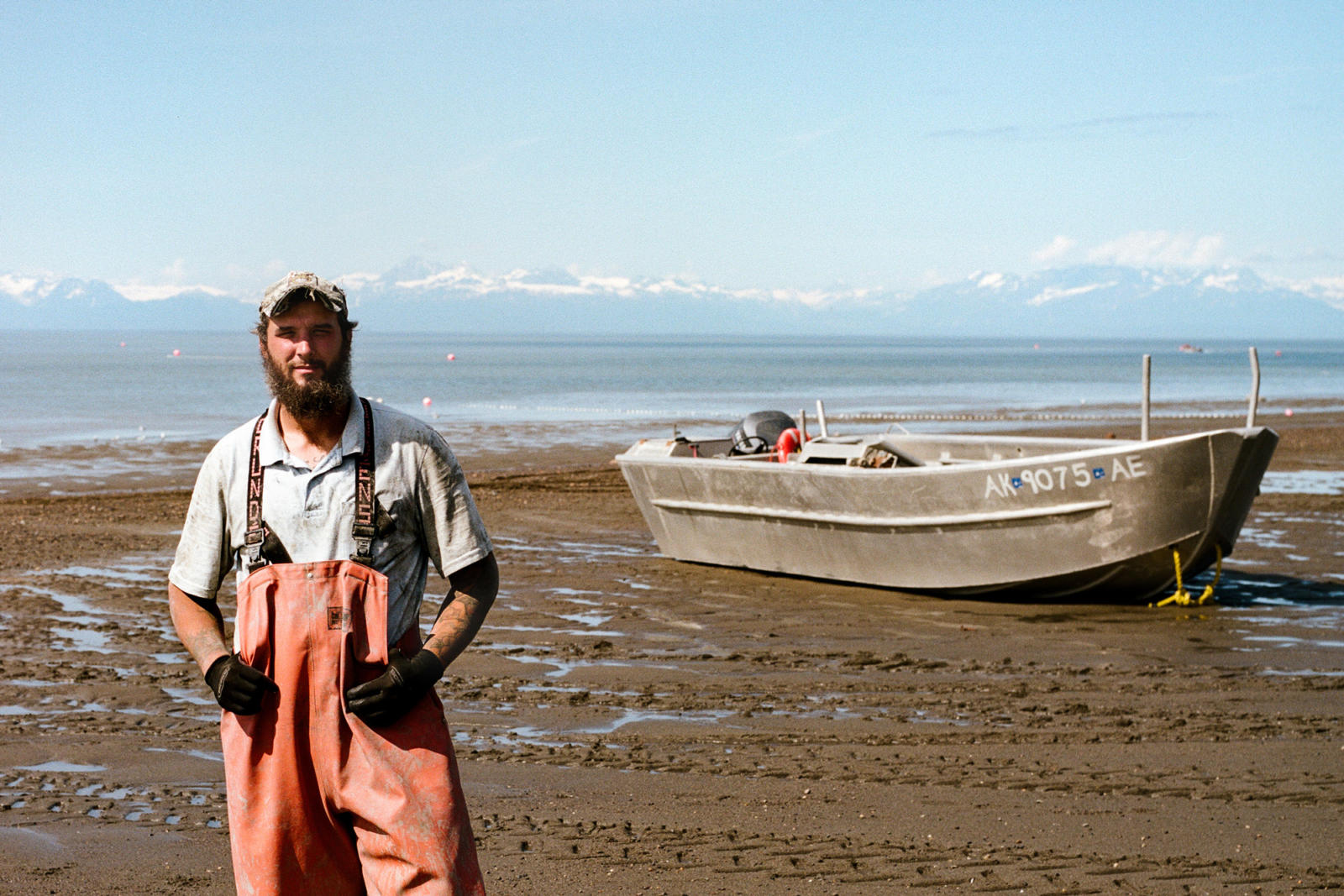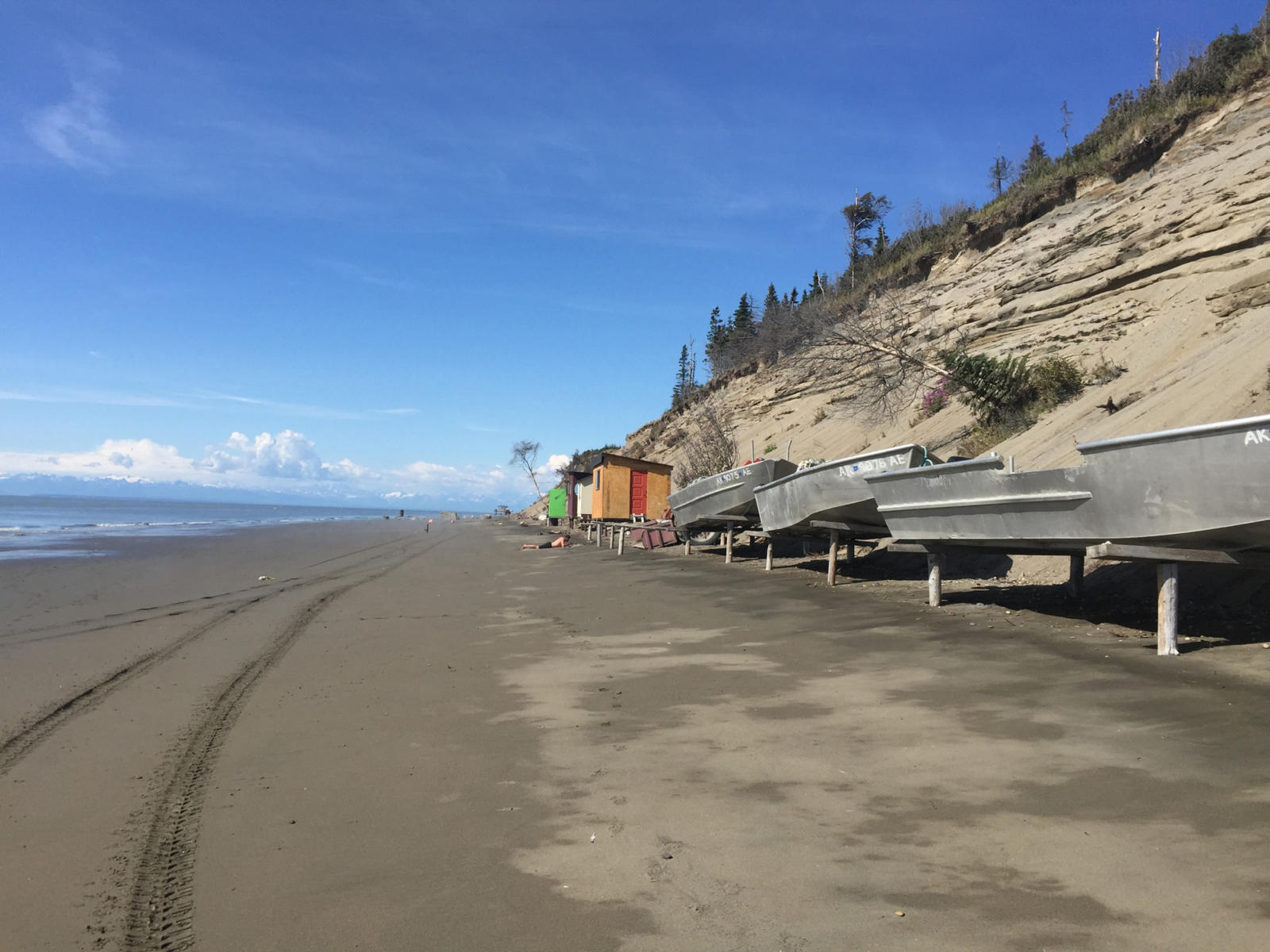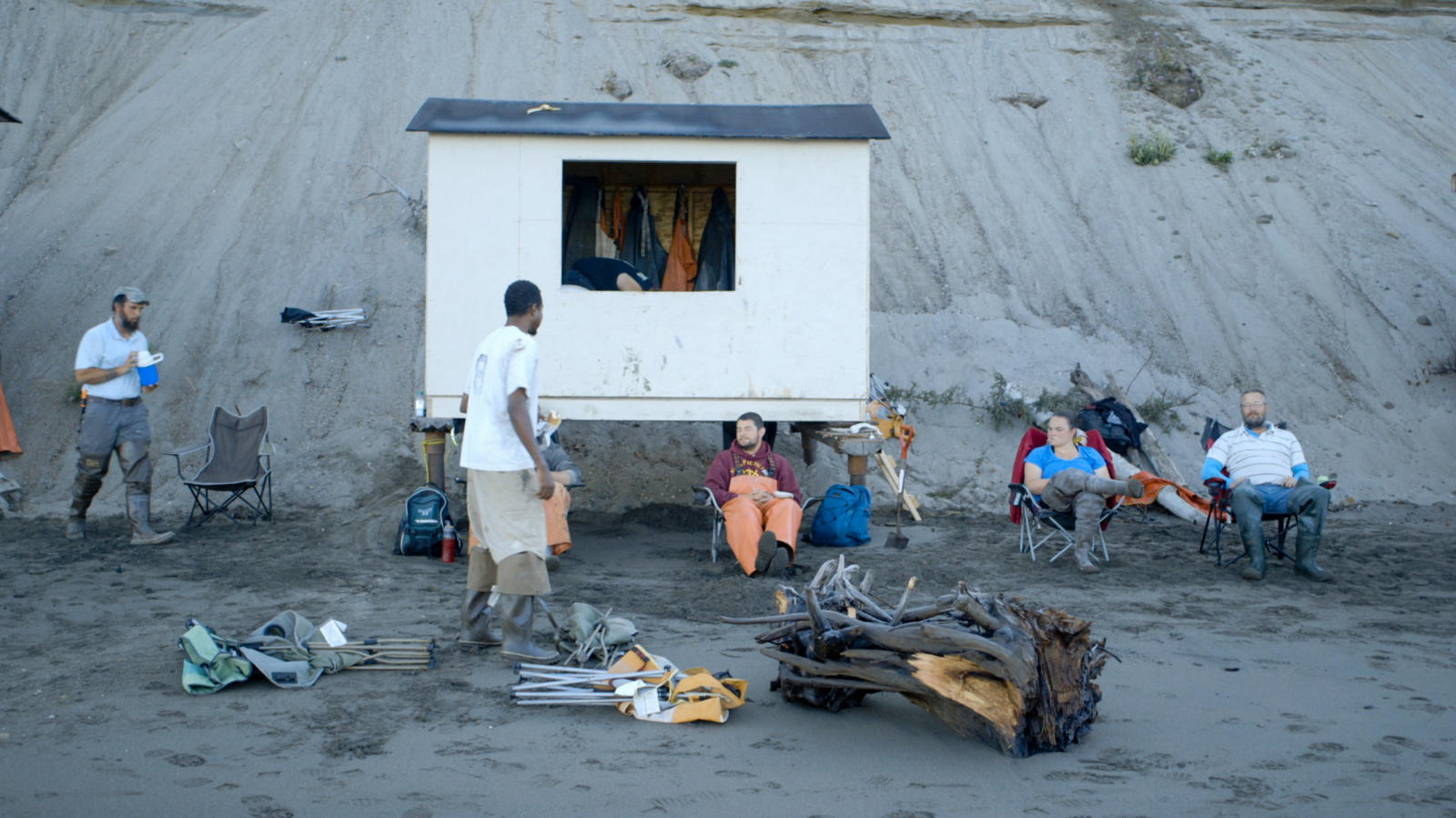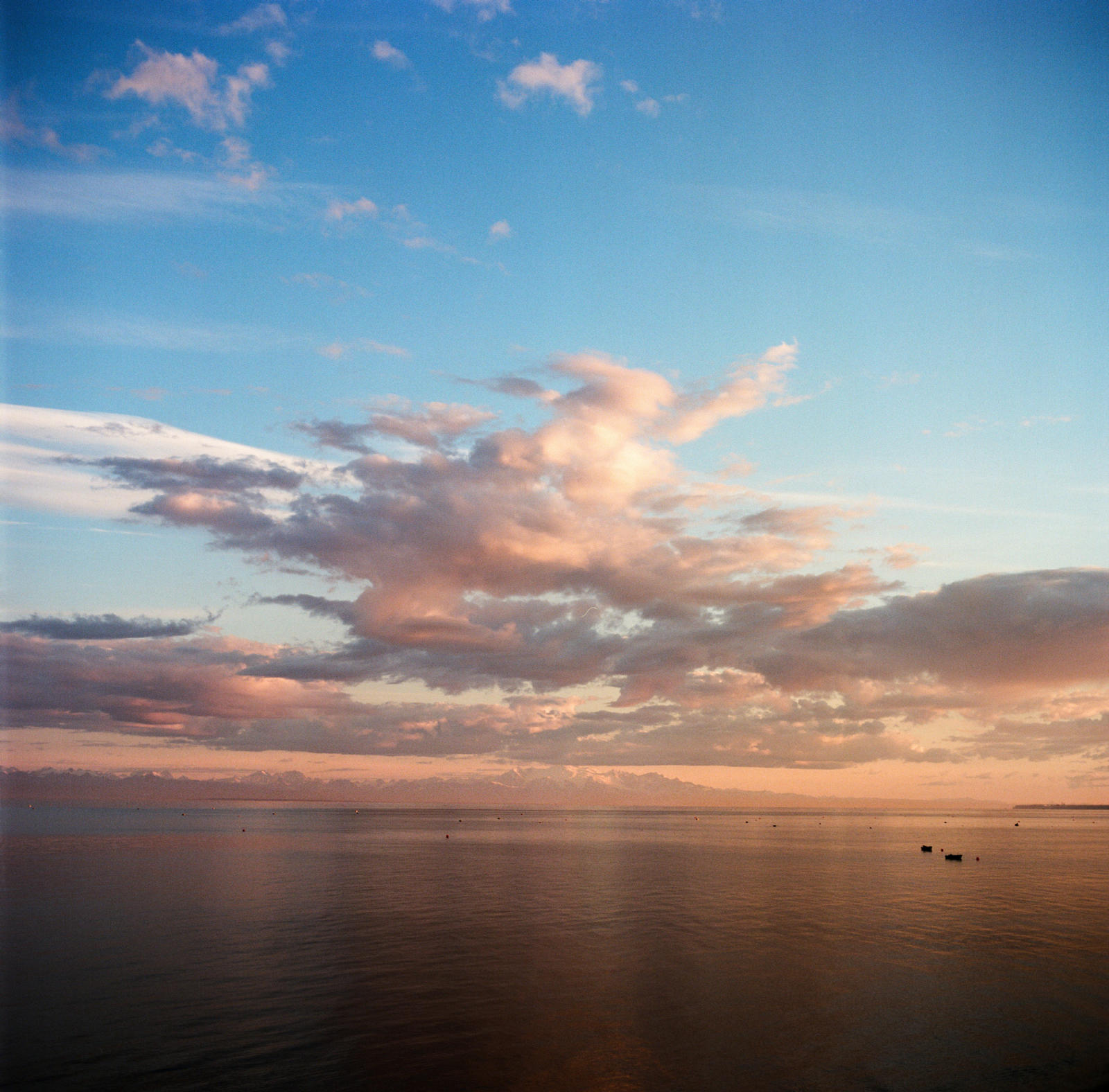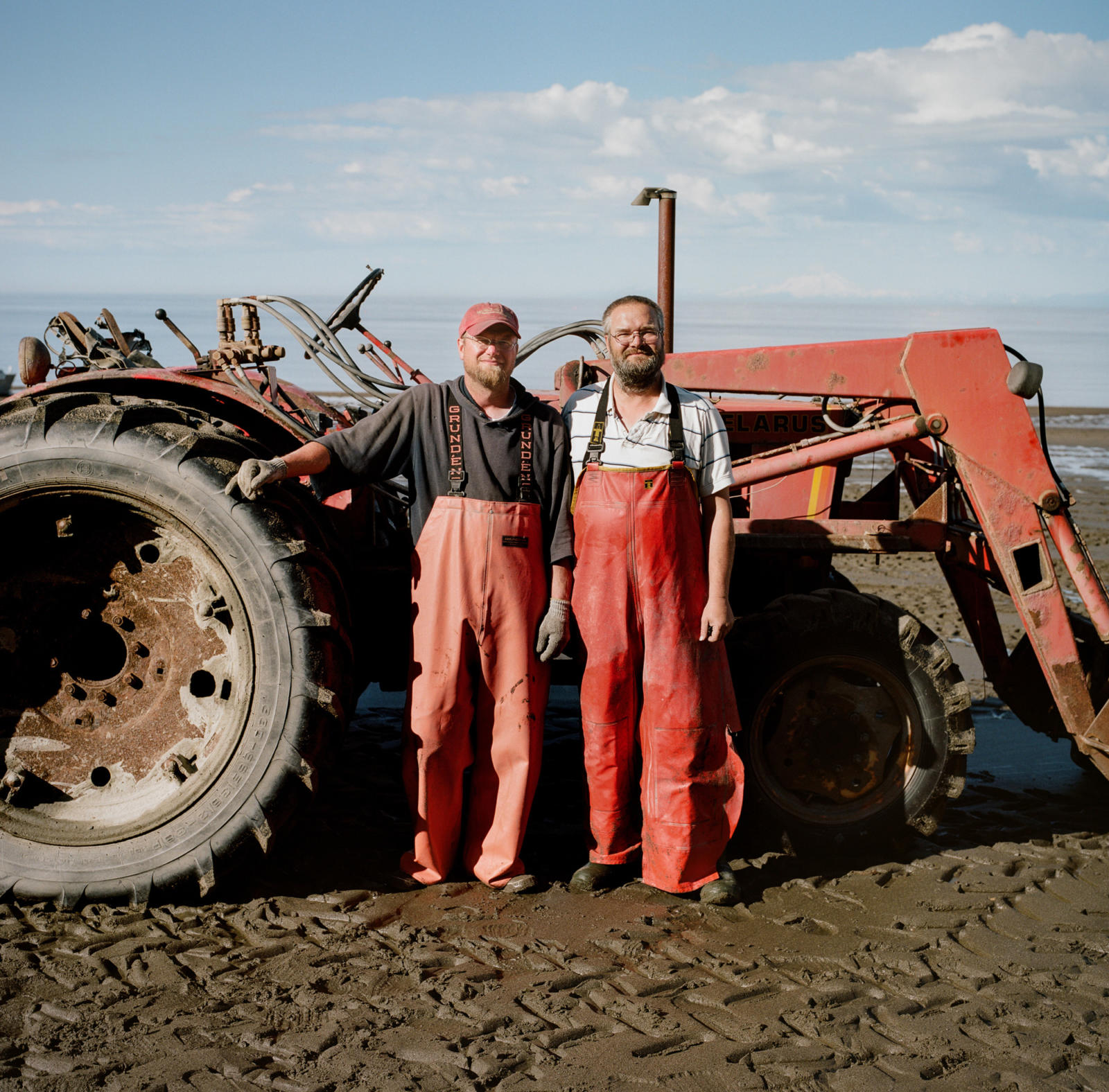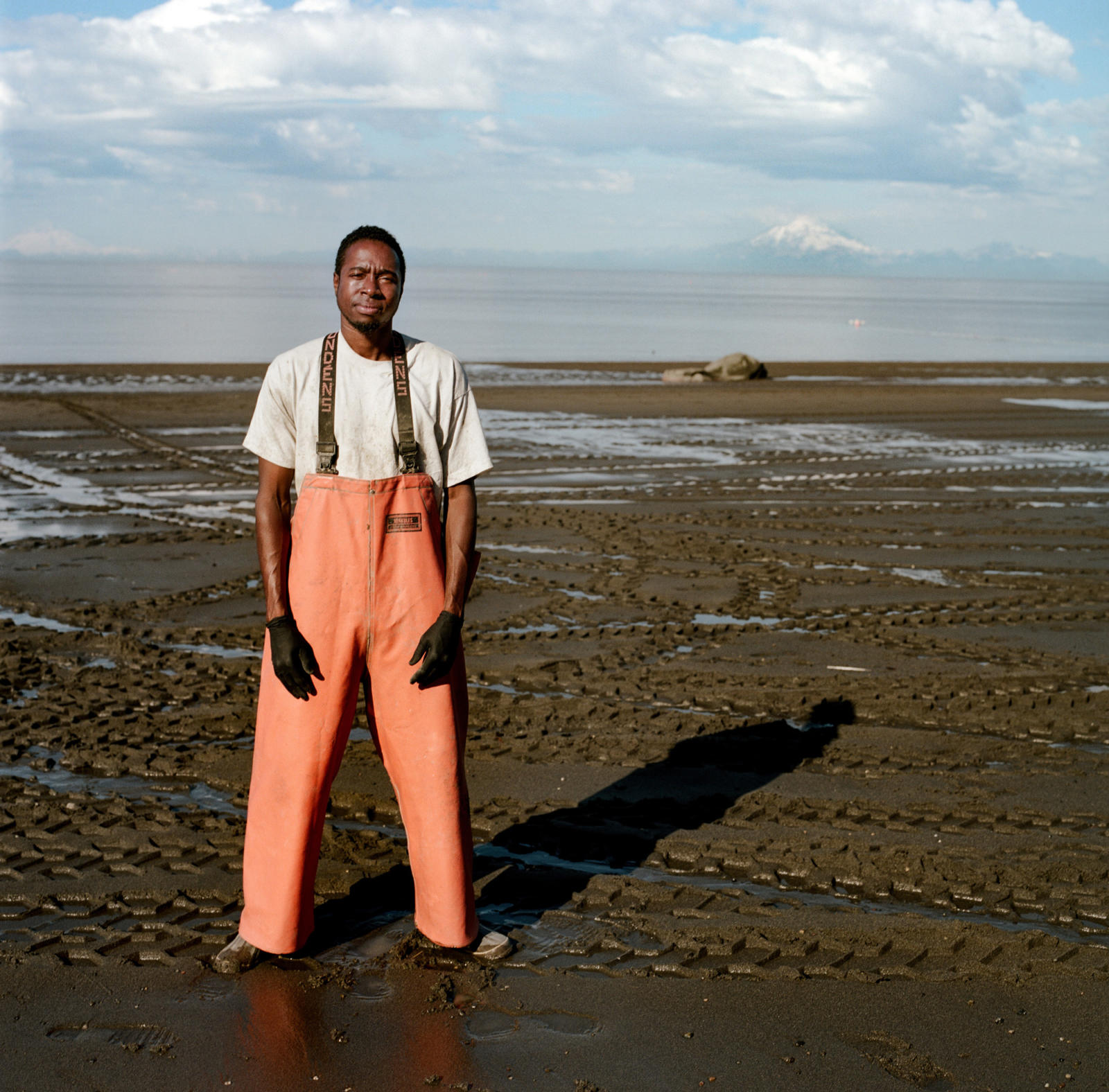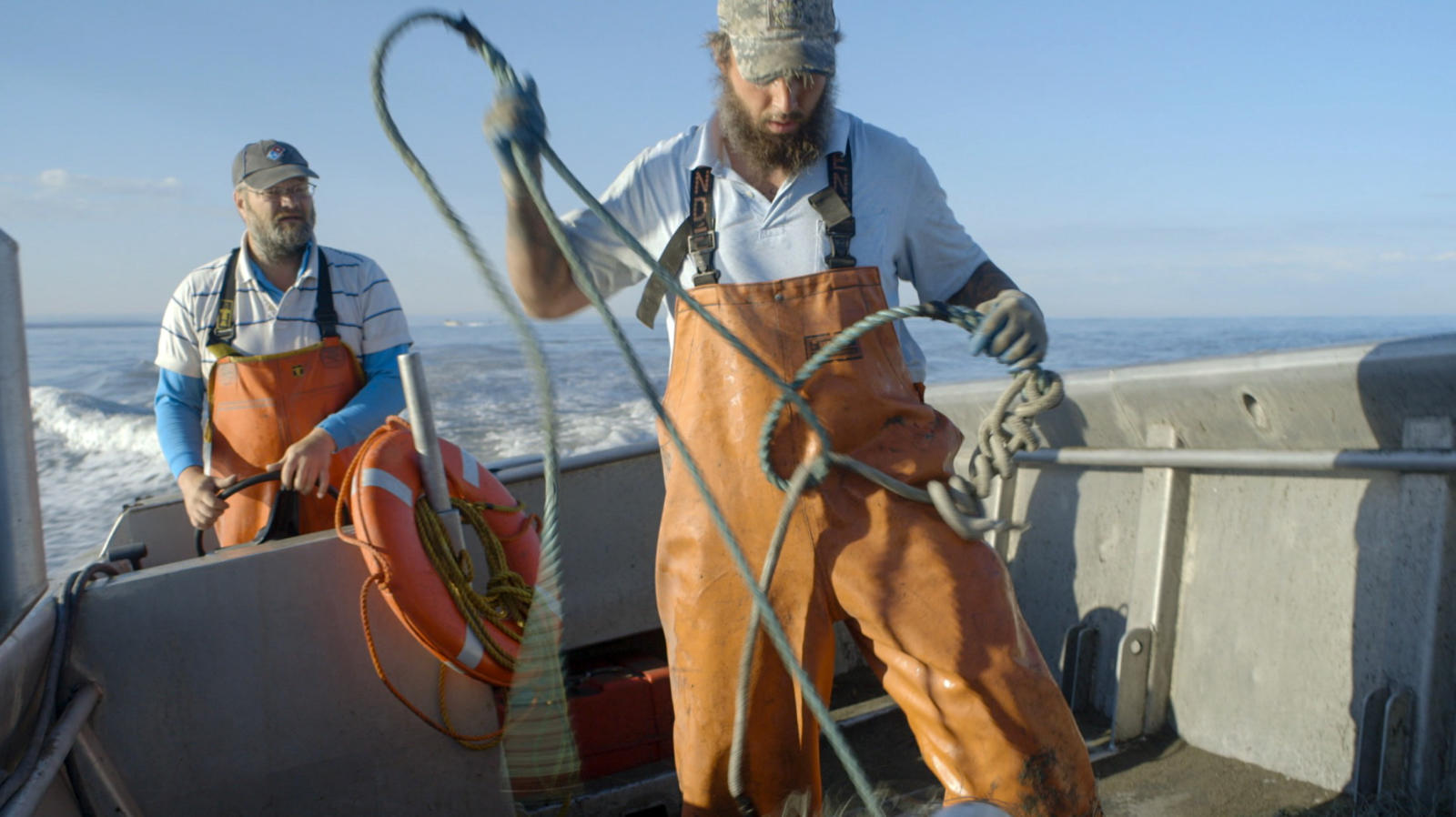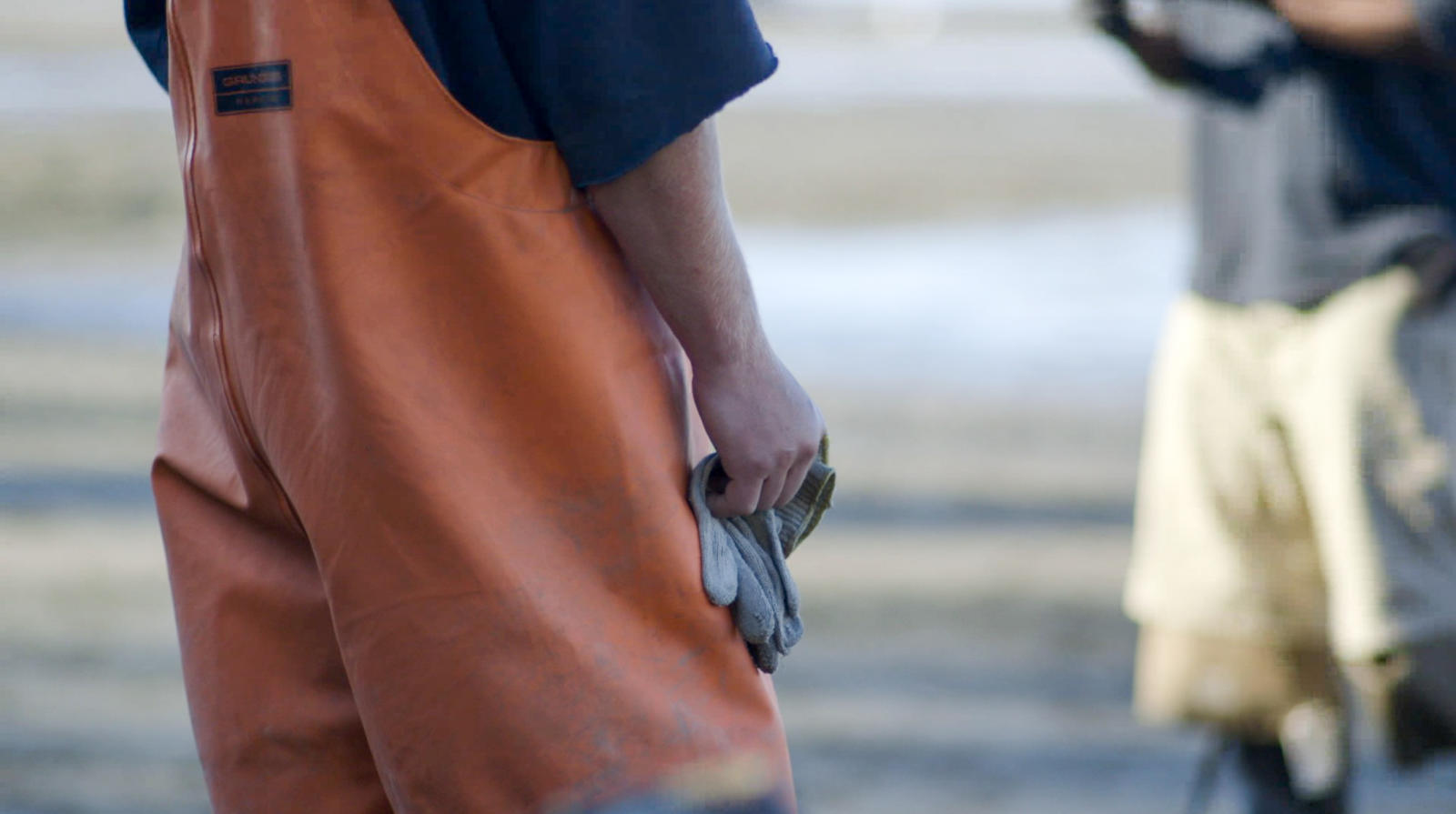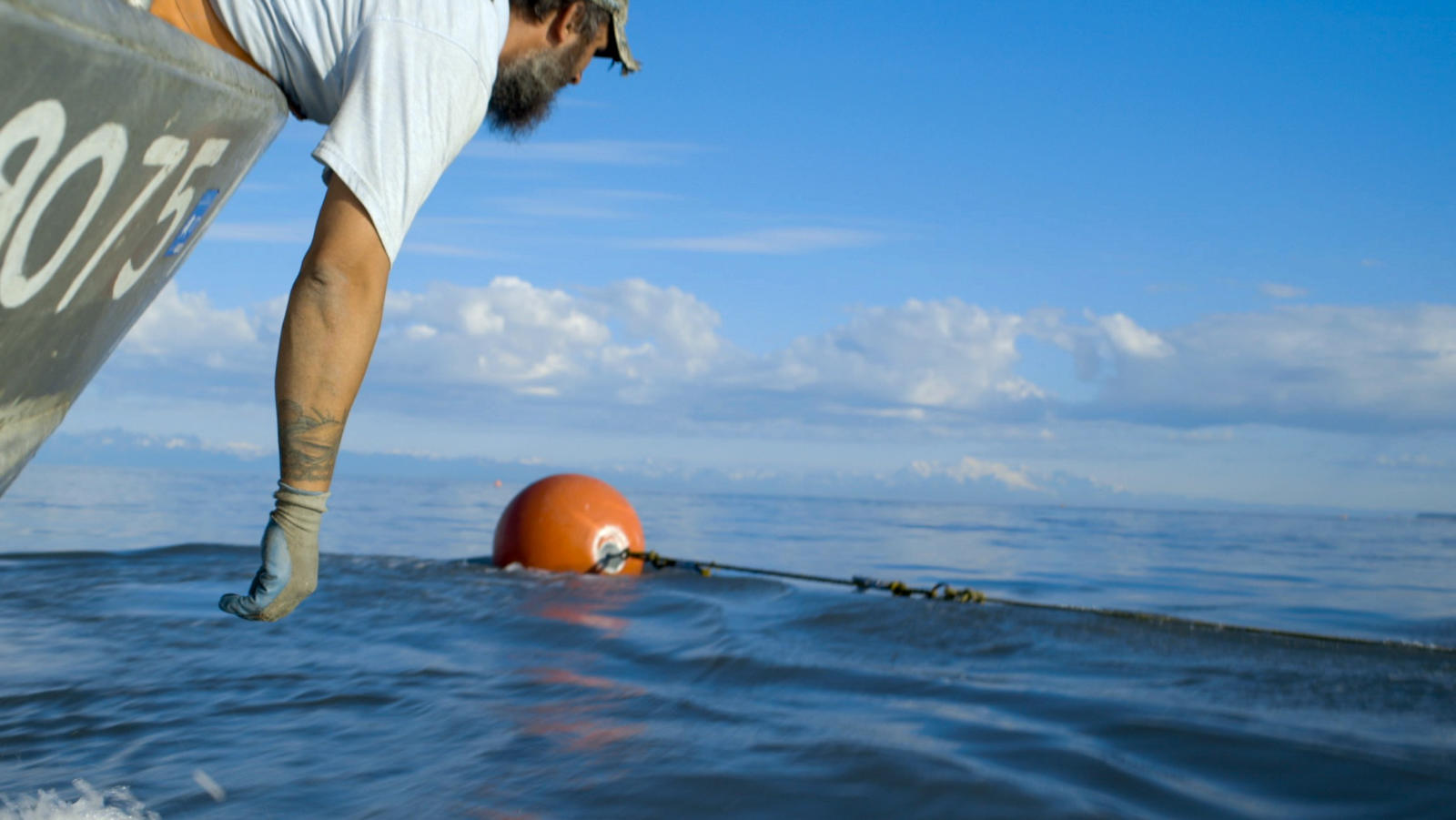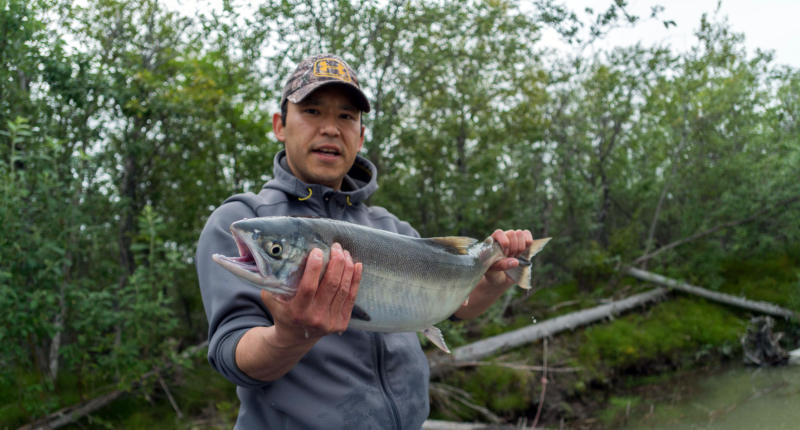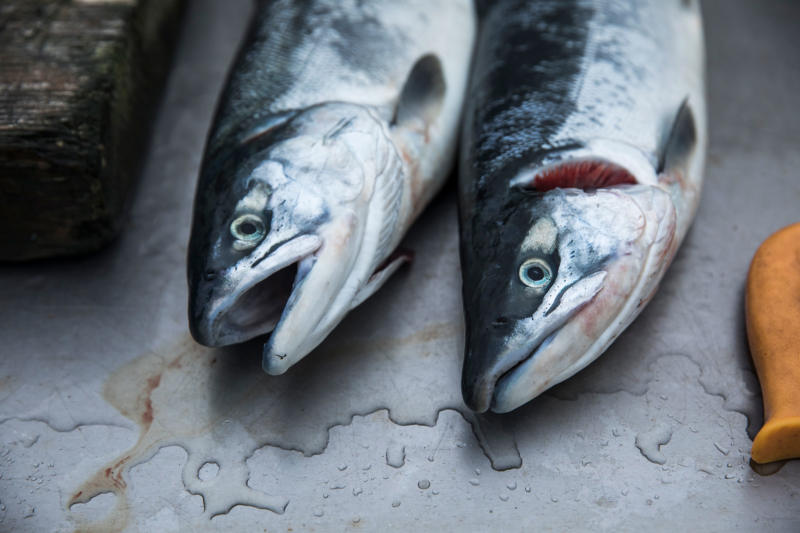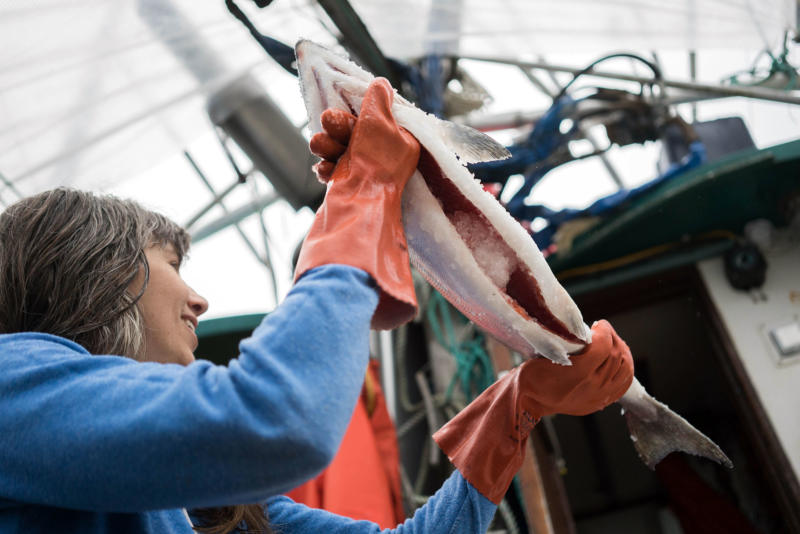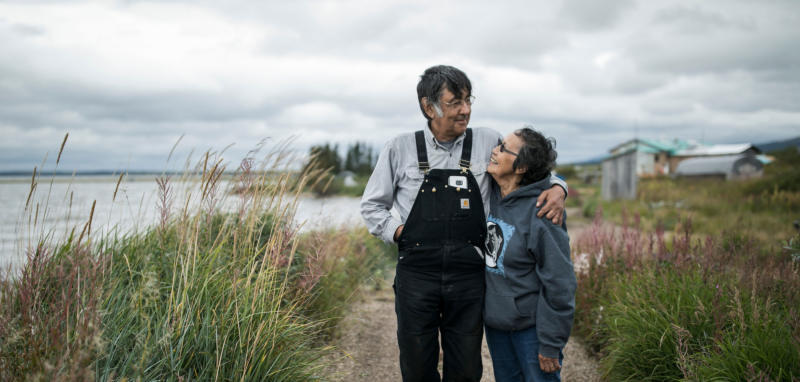Imagine a clan of fishermen traveling in a hodgepodge caravan of trailers and fifth-wheels. After a long journey, they find a place to rest: a sandy lot encircled by conifers and deciduous trees. Just across the way runs the bountiful waters of Cook Inlet. This place will do.
They situate the wagons along one edge of the lot, deposit their supply trailers in the middle. Under this expanse of Alaskan blue sky, there is plenty of room for their watercraft, trucks and a tractor, and the paraphernalia of the fishing trade. They set up a low platform upon which they place folding chairs and a place to grill their catch. A dog or two keeps the place lively. Yes, this place will do nicely, indeed.
